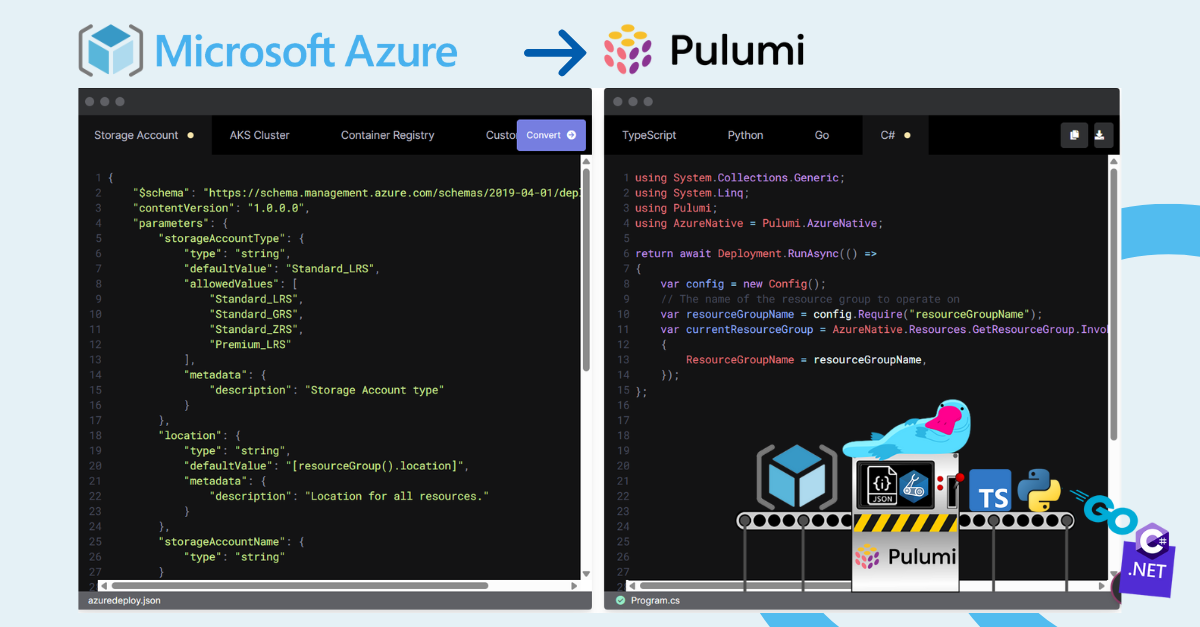Why Azure Teams Are Moving from ARM Templates to .NET

Azure Resource Manager (ARM) templates are powerful, but painful. If you’ve ever tried to provision cloud infrastructure using ARM, you know the challenges:
- Templates that started simple… and now span thousands of lines
- Manual configuration stitched together with bespoke deployment logic
- Lack of support for key services like Databricks
- Slow, error-prone deployments that require multiple manual steps
- No reuse, no testing, and no relief
ARM wasn’t built for the complexity of modern Azure workloads. If you’re already familiar with general-purpose languages, there’s a better path: Pulumi.



















